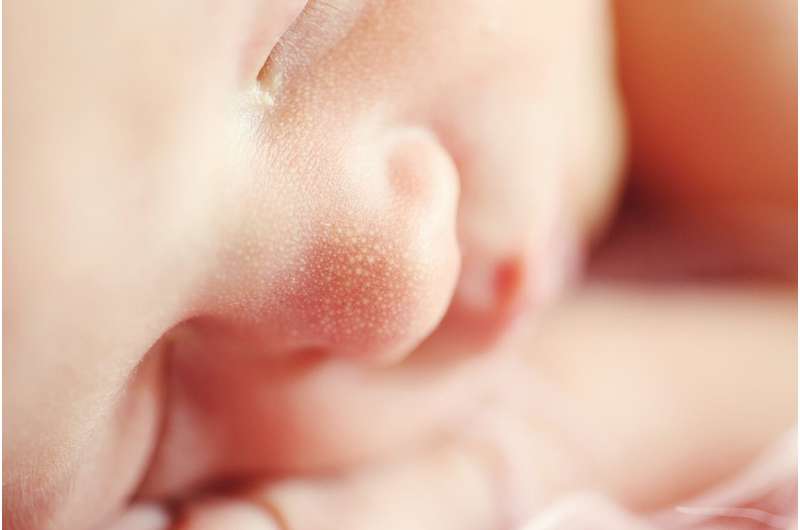Credit: CC0 Public Domain
New Australian birthweight centile charts based upon the most recent available population data for births with spontaneous onset of labor, will allow more accurate diagnosis of small-for-gestational age babies, according to research published today in the Medical Journal of Australia.
Centile curves of birthweight by gestational age are widely used in obstetric, pediatric and general medicine. During pregnancy, they are used to assess fetal growth and to screen for small and large fetuses at increased risk of antenatal and intrapartum complications; in the postnatal period, they are used to identify neonates at increased risk of complications such as hypoglycaemia and to assess their growth.
The 10th centile, in particular, is often used to define small-for-gestational age (SGA) babies, who are at increased risk of perinatal complications and death. The exact centile cut-offs therefore have important implications for diagnosis and management during the ante- and postnatal periods.
The MJA authors, led by Dr. Farmey Joseph, from the Royal Prince Alfred Hospital, analyzed data from the Australian Institute of Health and Welfare (AIHW) National Perinatal Data Collection, a population-based surveillance system for all births of at least 400g birthweight or at least 20 weeks' gestation. They excluded data from babies born because of obstetric intervention.
"Removing the intervention group from birthweight-based growth curves excludes a significant source of bias and leads to more accurate diagnosis of pre-term SGA, better identifying infants at risk of stillbirth and neonatal problems," Joseph and colleagues wrote.
"By restricting our analysis to spontaneous births, our charts more closely reflect normal growth and delivery trajectories by excluding the impact on growth curves for pre-term fetuses of early delivery by intervention of SGA babies. Our curves will allow more accurate assessment of fetal growth in Australia than previous charts based on unselected populations, which tend to underdiagnose SGA in pre-term fetuses."
Joseph and colleagues wrote that "the potential magnitude of underdiagnosis of SGA is illustrated by the fact that only 3.0% of all spontaneous births of less than 34 weeks' gestation in our study lay beneath the [previous] 10th centile for birthweight. [This suggests] that a substantial proportion of SGA pre-term fetuses are not recognized as such in Australia. Our methods could be applied to constructing growth charts for other populations for which the local obstetric database reliably differentiates between spontaneous deliveries and deliveries by intervention."
More information: Farmey A Joseph et al. New Australian birthweight centiles, Medical Journal of Australia (2020). DOI: 10.5694/mja2.50676
Journal information: Medical Journal of Australia
Provided by Medical Journal of Australia (MJA)





















